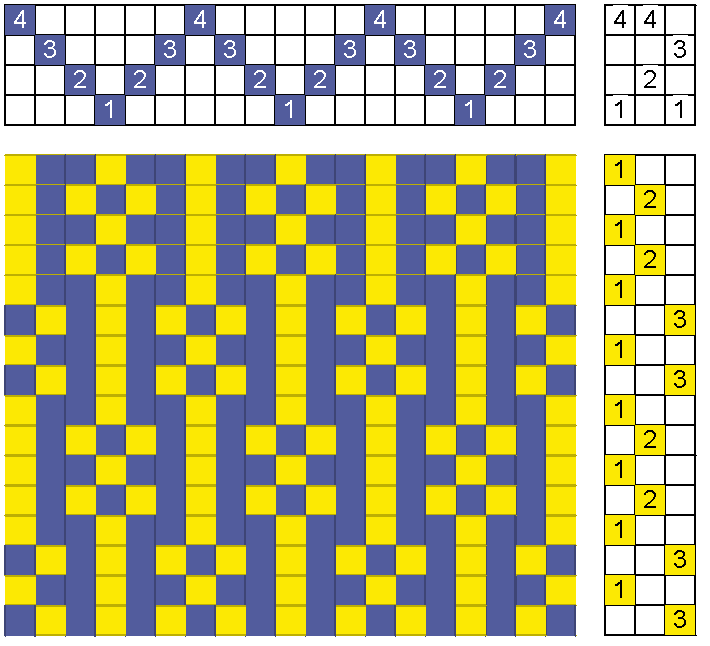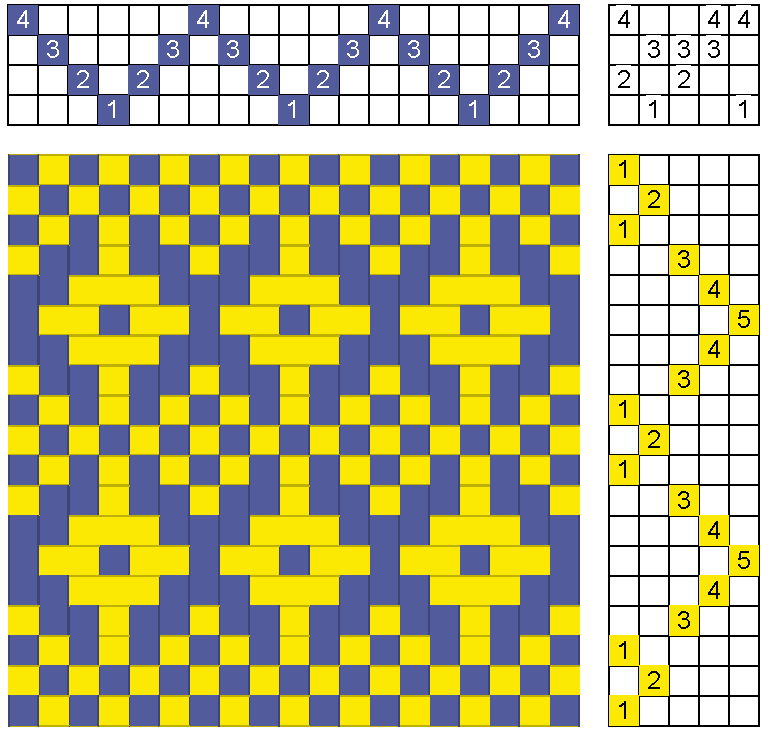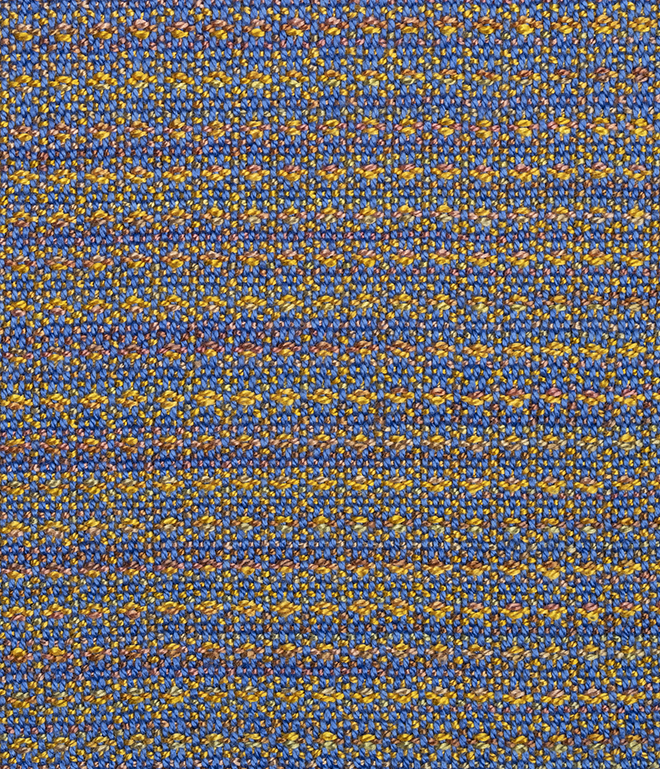| Variation on a Theme |
Marcy Petrini
January, 2023
After thinking about the opponent colors red and green, I decided I should think about yellow and blue, the other opponent colors that our brains see. For a scarf, I planned to use a 20/2 blue warp and find some yellow yarn for weft.
I wanted to use a twill because I like the way twills drape best for scarves. I looked through Davison’s A Handweaver’s Pattern Book for inspiration. On page 13, the draft #XII caught my attention (copyright 1994, 35th printing, 2002), the drawdown is shown below. Not a traditional twill with diagonal lines, but in the photo of the sample, the warp threads were pulled so they appeared to be wavy. I decided to try it.

Davison shows this draft in the section called Traditional Bird’s Eye. I have also seen it called reversed pointed twill, although in a continuum like our threading, it’s hard to distinguish it from a pointed twill.
I tried some yellow threads about the same size as the warp and even some larger ones. Finally, I settled on a variegated 10/2 Tencel “Reno Sunrise” painted by Teresa Ruch for Convergence® 2018.
The color interaction between the warp and weft worked well, but I just didn’t like the pattern. At a warp sett of 24 epi, I knew the motif would be small, ¼”, but I was interested in the wavy warp threads which I didn’t see, even with the tension off. Maybe the yarns were too small for the effect.
I went back to Davidson’s book to see what other options I had with that threading. The warp was threaded, sleyed, tied-on… I wasn’t about to start with rethreading. None of the options appealed to me. I wanted a motif that was different from what I had done in the past.
I decided to “play” with the draft and see what I could come with. The threading is very versatile, we can even weave huck with it…that may be a future topic for this blog… I finally settled on the drawdown below.

It has the tell-tale bird’s “eye” formed by the weft. There are three picks of plain weave separating the motif. Normally I wouldn’t combine a twill with plain weave because the take-up of the two structures is different, but with such small repeats, I thought it would work and it did.
The motif is small, but it adds just the right texture and floats to let the fabric play with the light and show luminescence. Here is a photo of the scarf. Luminescence needs movement of the fabric to show best, hard to capture in a still photo.

When photographing the close-up, Terry (my photographer husband) asked me which side was the right side. Good question! I like them both! I chose the side that was up while weaving. Here are both sides.


Happy Weaving!
Marcy
